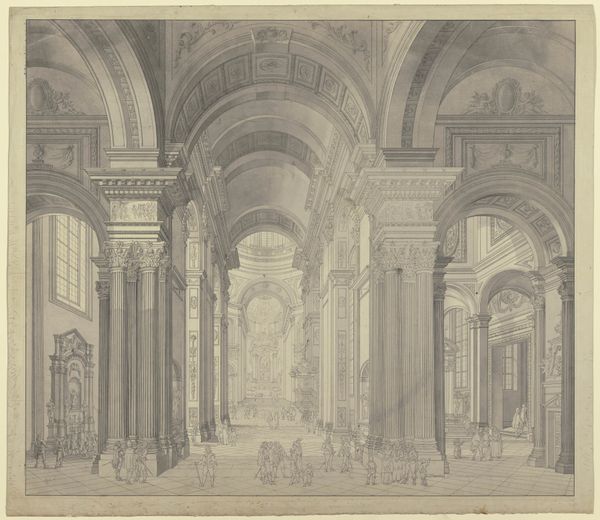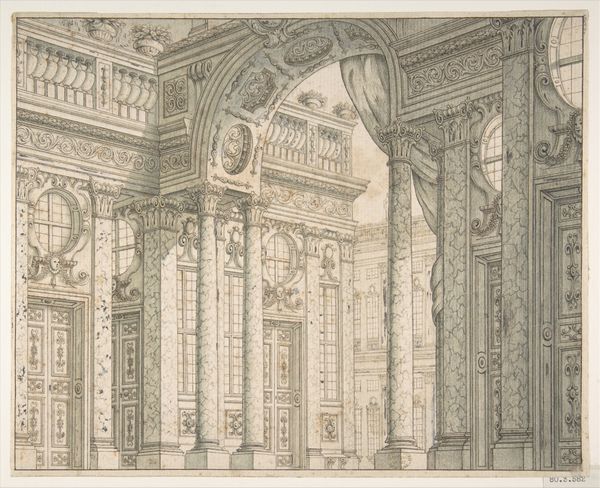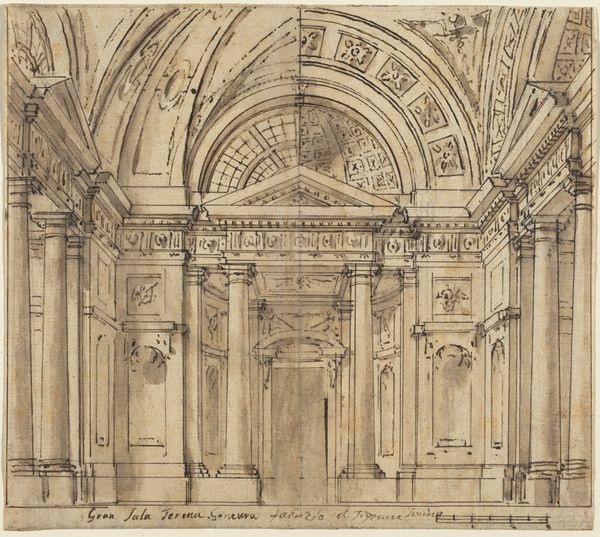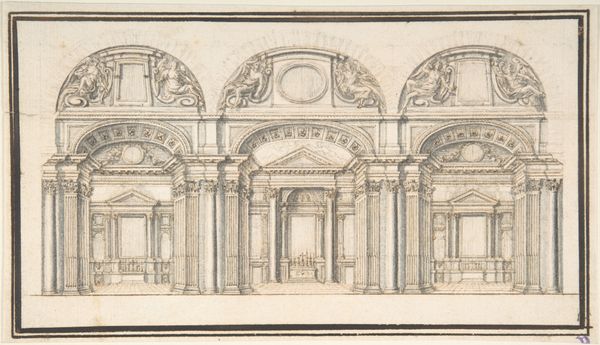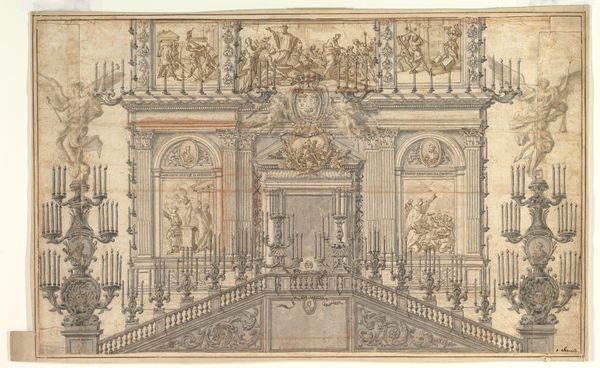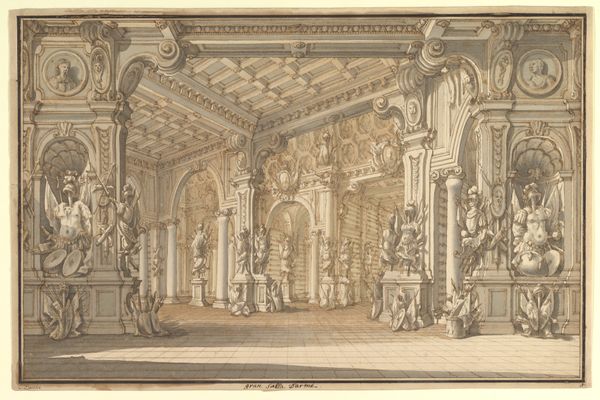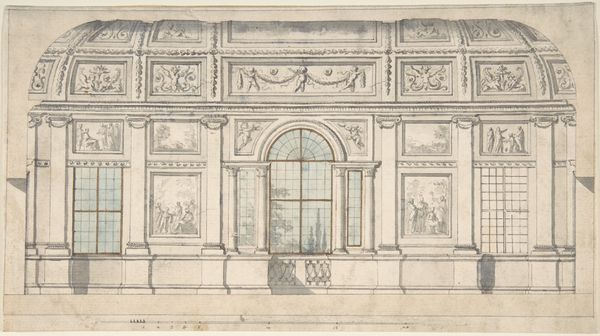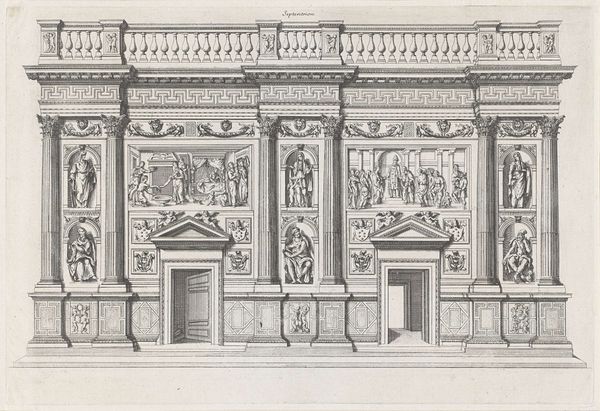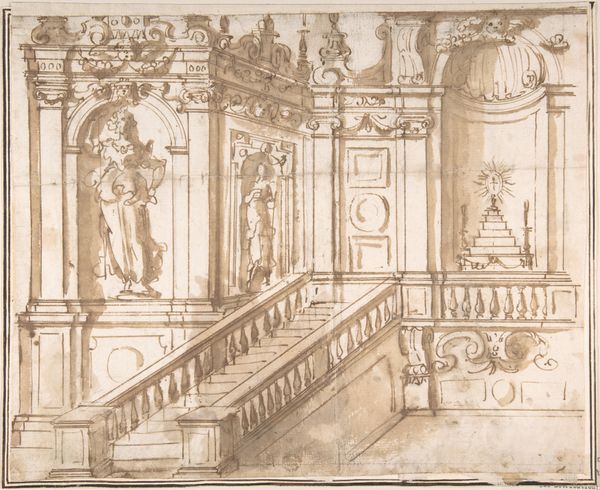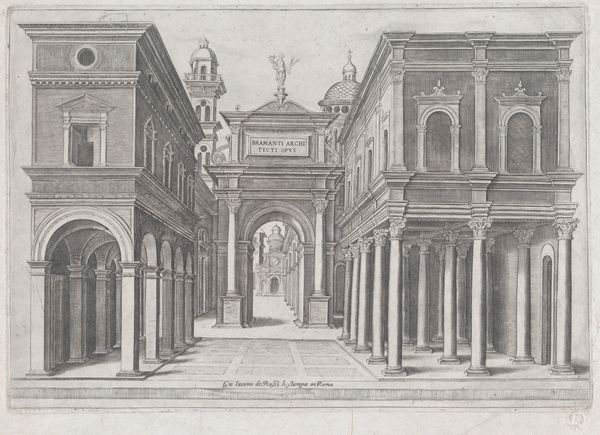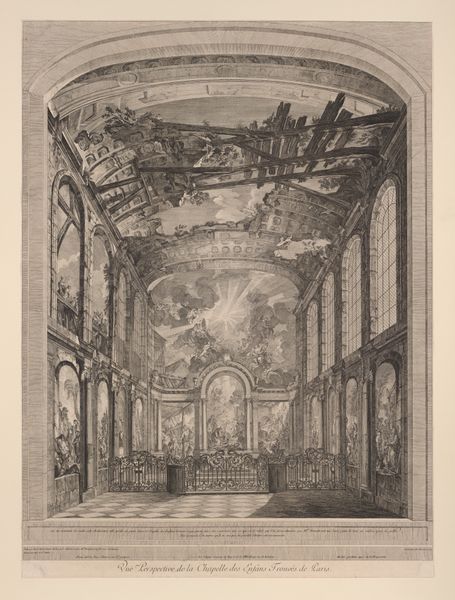
Interior of an Octagonal Room (Stage Design?) 1785 - 1795
0:00
0:00
drawing, print, etching, sculpture, pencil, architecture
#
drawing
#
neoclassicism
# print
#
etching
#
pencil sketch
#
etching
#
charcoal drawing
#
classicism
#
sculpture
#
pencil
#
history-painting
#
architecture
Dimensions: Sheet: 9 5/16 × 11 13/16 in. (23.7 × 30 cm)
Copyright: Public Domain
Editor: This is "Interior of an Octagonal Room (Stage Design?)" created between 1785 and 1795 by Tranquillo Orsi, now at the Metropolitan Museum of Art. It looks like a print, maybe etching or pencil… There’s such an overwhelming symmetry and repetition. What do you see in this piece? Curator: Formally, the most striking element is, indeed, its masterful command of perspective and spatial organization. The octagonal room is rendered with precise geometric accuracy. Notice how the lines converge to create depth, leading the eye towards a vanishing point that enhances the illusion of three-dimensionality on a two-dimensional surface. Editor: I see that, yes. So it’s all about the perspective? Curator: Not entirely, consider how the play of light and shadow animates the architectural forms. The delicate gradations of tone define the contours of the columns, arches, and sculptures, lending a tactile quality to the drawing. This chiaroscuro effect adds a layer of visual interest and complexity, drawing the viewer further into the space. How would you define the emotional character that light and shade produces here? Editor: I would describe the light and shade, in general, as fairly soft and uniform throughout. The shadowing provides visual interest, without any deep shadows which would introduce stark emotion. The room, though detailed, gives a generally muted or quiet sense. Curator: Precisely. Further observe how the architectural features—the columns, arches, niches, sculptures—are all meticulously rendered with attention to detail. Each element contributes to the overall sense of balance and harmony. Would you say that this piece relies on symbolism or is the pure geometry enough to satisfy you? Editor: It's hard to say! I suppose the use of classical sculptures *could* be read as symbolic. But the structure of the room is so self-contained that I don't need more to get it. Curator: I appreciate your insights. Looking closely at the interplay of perspective and tone reveals the elegance of its design. Editor: I've learned a lot about seeing architecture as geometry.
Comments
No comments
Be the first to comment and join the conversation on the ultimate creative platform.
